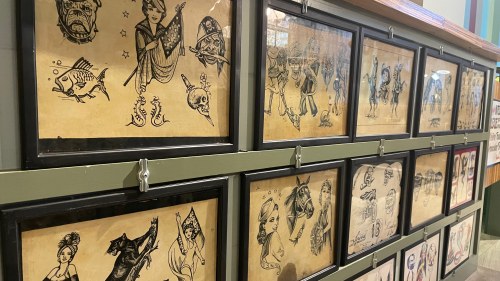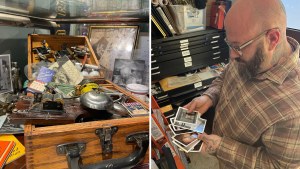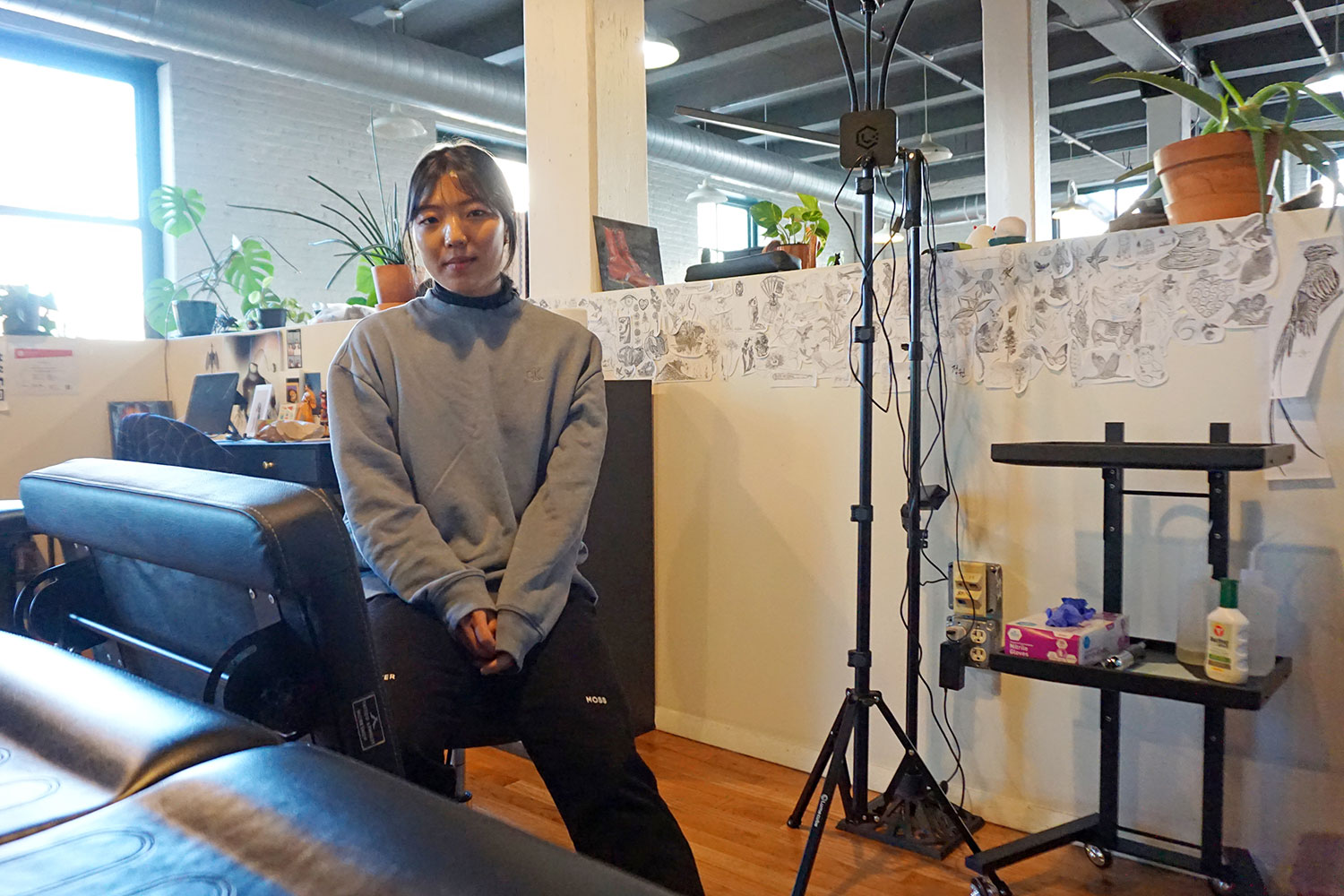Living passports: How tattoos ink Chicago's cultural connections

For more than a century, tattoo artists have connected Chicagoans with other countries and cultures — a tradition that lives on, even as the industry changes.
Hundreds of tattoo artists will be at this year’s Chicago Tattoo Arts Festival in March, including international tattooists. While the festival is just a little over a decade old, Chicago’s tattoo tradition runs back over a century — and the ink has linked the city with other countries and cultures from the very start.
Sailors and the circus: Chicago tattoo history
The roots of Chicago’s tattoo culture are almost as old as the city itself, stretching back to the late 19th century. Traveling circuses visiting Chicago and the Midwest often featured a tattooed man or woman. In the early 20th century, some circus workers — including “Tatts” Thomas and Joseph “Barney” Harkin — found work tattooing on South State Street, which was then a seedy red-light district with burlesque shows and penny arcades, according to Nick Colella.
“I’ve been chasing ghosts of these guys forever,” Colella, owner of Great Lakes Tattoo, told ChicagoGlobal. Colella has spent years collecting photographs, tattoo machines, stencils, designs, and a host of other artifacts from Chicago tattoo history. He’s assembled an archive any museum curator would envy.
Subscribe to ChicagoGlobal
This story first appeared in the ChicagoGlobal newsletter, a joint project of Crain's Chicago Business and the Chicago Council on Global Affairs.
That archive is full of sailors. New cadets from Great Lakes Naval Base accounted for a tremendous amount of business for the tattoo artists in State Street’s arcades, Colella says. Sailors asked for flash art tattoos of eagles, panthers, hearts — a style that’s now called traditional American.
When sailors docked overseas, they got tattoos in port. Their bodies became a living exchange of tattoo art styles and ideas, their skin snail mail for international design.
“When sailors would go to Japan or China,” Colella explained, “they would get Chinese and Japanese tattoos because that’s what was on the walls.”
When they returned to the U.S. and got their next tattoo, American artists saw sailors’ tattoos from overseas and — in some cases — traced it right off of sailors’ arms so they could use the designs themselves. Over time, some American artists, like one-time Chicagoan Sailor Jerry (who birthed an eponymous tattoo style), developed relationships with Japanese tattoo artists like Kazuo Oguri, deepening these cultural ties.

Left: A traveling tattoo kit that belonged to Chicago tattooing icon “Tatts” Thomas displayed at the Great Lakes Tattoo shop. Right: Nick Colella, co-owner of Great Lakes Tattoo, has collected photos of tattoo artists working in Chicago from as early as the 19th century.
International artists in Chicago
Seulgee Lee is a South Korean tattoo artist who will be tattooing at the Chicago festival for the first time this year. Despite a ban prohibiting tattooing by anyone but medical professionals, South Korea has a thriving underground tattoo scene with as many as 50,000 tattoo artists, some of which have started unionizing.
“It’s a saturated market,” Lee told ChicagoGlobal. “There are just way too many artists there, and it’s also illegal. So it’s kind of hard to make a living for yourself.”

That’s, in part, why some South Korean artists come to work in the United States as guest artists visiting established studios, Lee explained.
Lee tattoos at Evergreen Studios in Fulton Market. Emily Fong, the shop’s owner, says international artists working in the U.S. have introduced new styles and trends in tattooing. That makes partnering with these artists especially appealing.
At the same time, Fong worries that international artists — especially women and people of color — are often marginalized within her industry. That concern is informed by Fong’s own experience as a tattoo artist, especially before she opened her own studio.
“I experienced a lot of racism, misogyny — overall just treating people unfairly,” she said.
Cultural appropriation
Old-school tattoo artists copied international designs, often fusing them with American pop and pulp culture. Today, though, many tattoo artists are reckoning with cultural appropriation and struggling to decide what they will and won’t tattoo on someone.
When artists first start tattooing, Fong says, they often take any work they can get. But as they build a reputation and brand, they feel more power to pick and choose.
“I personally think that if you don’t know the language, you don’t know what it says, you should not be getting it tattooed on you.” According to Fong, Sanskrit tattoos are very popular right now, especially among yoga fans.
“I don’t do those anymore,” she said.
For her, it’s also important that the tattoo artist have a connection to the culture. Tribal Polynesian tattoos, she said, have a deep symbolic meaning, and in her view, it wouldn’t be appropriate for her to tattoo them. But an artist with a cultural connection to that tradition should be empowered to make their own choice.
Colella, on the other hand, worries less about cultural appropriation.
“I think people put too much into their tattoos,” he said. “They think they have to mean something so they can explain it to their friends.”
Still, he said, “The designs on the walls have a history. They’re not just random designs.” Each of them has its own vocabulary and grammar specific to place and time.
“Designs on the walls that have been repainted by countless other tattooers — you’re a link in that chain.”
The Chicago Tattoo Arts Festival runs from March 22 to 24 at the Donald E. Stephens Convention Center in Rosemont.
This story first appeared in the ChicagoGlobal newsletter, a joint project of Crain's Chicago Business and the Chicago Council on Global Affairs. Subscribe today.

